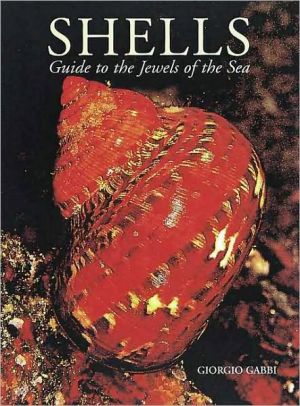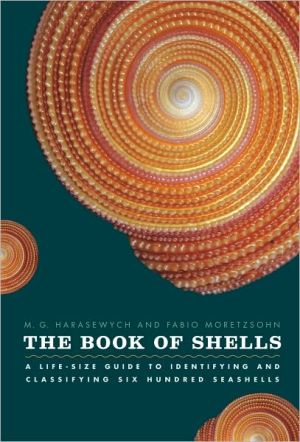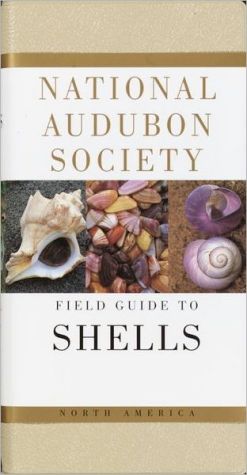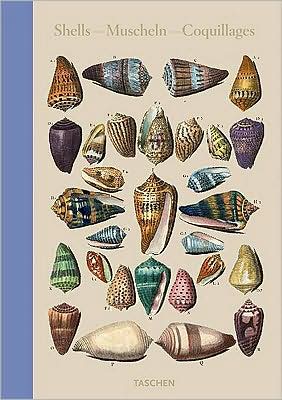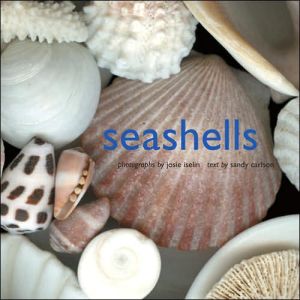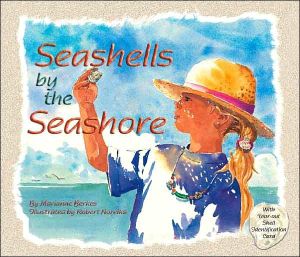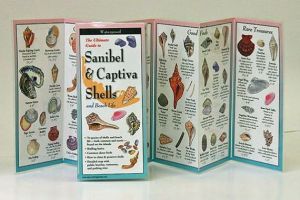Shells: The Jewels of the Sea
By combining the best in underwater photography with brilliant illustrations and the most complete and informative text, this incomparable book presents a fresh guide to the world of shells.\ With their exotic shapes and radiant colors, shells are among the most captivating of all nature's creations and have been highly valued by man since prehistoric times. Some cultures, recognizing their durability, used shells for trading; many, admiring their exquisite beauty, have featured them in their...
Search in google:
By combining the best in underwater photography with brilliant illustrations and the most complete and informative text, this incomparable book presents a fresh guide to the world of shells. With their exotic shapes and radiant colors, shells are among the most captivating of all nature's creations and have been highly valued by man since prehistoric times. Some cultures, recognizing their durability, used shells for trading; many, admiring their exquisite beauty, have featured them in their art and jewelry. This visually stunning book explores the remarkable variety of shells and offers an extensive guide to the world in which they thrive. Mollusks, the animals without backbones for which shells serve as protection and shelter, are second only to insects as the most widespread creatures on earth. These adaptable animals are vividly captured by underwater photography in their natural habitats, from the coral theater of the warm seas to the richly vegetated underwater meadows. The illustrations reveal the shells just as divers would encounter them. Using full-color diagrams and charts, Shells explains the complex anatomies of various mollusks as well as the intricate construction of their shells. For shell collectors of all levels, this book is full of practical advice. It explains how to classify, catalog, and preserve shells in collections that are both beautiful to look at and respectful of nature. In a comprehensive guide section, four hundred different types of shells of the world are described and illustrated, ranging from the most numerous to the rarest. This book, with its up-to-date text and in-depth portrait of the jewels of the sea will be invaluable tonaturalists, divers, lovers of marine life, and shell collectors at any level. Other Details: 201 full-color illustrations 172 pages 8 1/2 x 8 1/2" Published 2000 Booknews Appropriate for the collector, budding naturalist, or diver, this book uses drawings and underwater photos to describe the anatomy and behavior of each shell's inhabitant, then provides a geography of marine mollusks. Finally, the author shares some tips from his monthly column about shell collecting, including what to wear, how to clean and display shells, and what information to record (he includes a sample record from a database). An identification guide with lovely drawings concludes the work. Annotation c. Book News, Inc., Portland, OR (booknews.com)
Introduction\ Shells are beautiful, with elegant forms, surprising sculptures, refined designs and captivating colors. Shells remain intact for long periods of time, like precious metals and gems. And in fact, costly pearls are nothing more than a shell covering that the oyster builds around a foreign body that has entered its tissues. When man succeeded in producing that most noble of ceramic products, porcelain, he gave it the name of a shell, the marginella (porcellana in Italian), with its unparalleled glossy, smooth surface. And mother-of-pearl, an iridescent product from the humble abalone of our reefs, can provide an elegant touch to a simple button, and in its more precious forms provides the raw material for refined jewelry work.\ Thus, it is no wonder that little shell treasures have been found with the remains of our most distant ancestors. It is yet another indication that the Paleolithic hunters and gatherers we commonly call cavemen had aesthetic tastes quite akin to our own, as we work and play at our computers. Archaeological excavations on sites that date back to classical antiquity have revealed collections of shells that came from thousands of miles away. In ancient Rome, they came from India, along with spices, gems, perfumes, and precious cloths. At the time of the great explorations, the dwellings of the rich and cultured of Europe were filled with spectacular, exotic shells. By that time, shell collecting was no longer just an aesthetic undertaking but an homage to the first conquests of modern science.\ Thus, without knowing it, the child who stoops to collect a shell on the seashore is repeating a gesture that human beings have performed since the dawn ofthe evolution of our species. And why is the eye irresistibly attracted to the form of a shell? Perhaps because, while it is a part of nature, it is different from anything else found in creation. Certainly, a worm or a curled-up caterpillar takes on a spiral form, but the result is banal and arouses no curiosity. The snail's spiral is something unique, different, and only in modern times has science discovered its secret: it is a logarithmic spiral, a line that runs according to a rigorous mathematical relationship. No wonder it tantalizes the eye and mind.\ But many of us do not ask such difficult questions. More simply, shells bring the sea to our homes. They remind us of beautiful sunny days, the salt air, and the enthusiasm we want to relive next year, perhaps on the same beach, or maybe in a completely different place—the tropics or the antipodes. For those who scuba dive, every shell evokes a particular seabed, the thrill of a new panorama discovered while exploring the blue depths. Even a simple bag of detritus, to be explored with a lens on a winter evening to reveal its little hidden treasures, takes us back to a magnificent, sheer wall, adorned with sea fans, or to a special grotto, dark as night but full of promise, or above the shining splendor of that coral formation, or into the green twilight of a forest of oarweed.\ In this book, shells will be considered as travel companions, guides to exploring the marine environments that their makers, the mollusks, conquered well over 600 million years ago. To us, they will be much more than beautiful objects or alluring memories: they will help us understand and interpret the often enigmatic panoramas of the "sixth continent," which extends from the coastline where we feel the first sprays of water to the last horizon, where the blue of the sea merges with the sky. We will briefly consider the importance of mollusks and shells to man in both the past and the present, their unwitting role in the evolution of primitive society, and in trade, art, and science. Finally, we'll have some practical advice on producing a collection of shells that is beautiful to look at, helpful in understanding the sea, and respectful of nature.
Introduction: A Resource for Humanity How a Shell is Created: A Family Tree 600 Million Years Old; Questions of Kinship The Mollusk: Anatomy of a Winner: In the Belly of a Marine Snail Feeding, Reproduction, Defense: The Vital Functions: Movement; Respiration; The Nervous System and Sensory Organs; Feeding; Reproduction The Mother-of-Pearl Factory Where Shells Are Found: Geography of Marine Mollusks; The Saltwater Realms; On Coastal Rocks; Descent into the Shadows; On and Under the Sand and Mud; The Coral Theater; Hidden in Underwater Meadows; The Mangrove Forests; From the High Sea How to Collect Shells The Shells of the Sea Index Author Biography: A scuba diver, lover of the sea, and journalist, Giorgio Gabbi is the author of a monthly column about shell collecting. He has contributed many articles on nature and travel to leading publications.
\ BooknewsAppropriate for the collector, budding naturalist, or diver, this book uses drawings and underwater photos to describe the anatomy and behavior of each shell's inhabitant, then provides a geography of marine mollusks. Finally, the author shares some tips from his monthly column about shell collecting, including what to wear, how to clean and display shells, and what information to record (he includes a sample record from a database). An identification guide with lovely drawings concludes the work. Annotation c. Book News, Inc., Portland, OR (booknews.com)\ \
